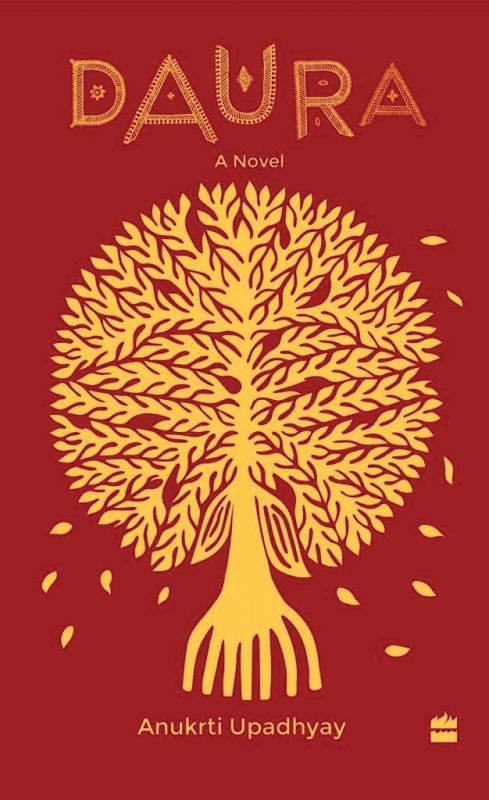An enchanted journey

The dream is real as there’s no other reality. Everything else is surreal, seen in the somnambulist state, as Anukrti Upadhyay projects her characters in her novel Daura, set in rural Rajasthan, where the nomads and tribes live amid their own ideologies and mystic beliefs. And often everything is connected.
As the young district collector comes here after his posting, he finds himself drawn deeper into the lives of these inhabitants. A bright and progressive IAS officer, who finds underground water reserve in this vast desert, immediately starts working on the project and in the process brings both solace and justice to the tribes settled there.
 by Anukriti Upadhyay, Publisher: Harper Collins, pp.160, Rs 299
by Anukriti Upadhyay, Publisher: Harper Collins, pp.160, Rs 299
A flutist and a music lover at heart, one day he comes across the nomad sarangi player — Sarangiya. As their friendship develops into a jugalbandi of sorts, he is soon introduced to a beauty that is pure and absolute — an encounter that precipitates a dangerous unison and descent.
A mush mash of realism and fable, the pages from his journal gives a clear narrative of characters around him and creates a compelling account of a life that is a myth and yet mystic.
Indeed a powerful and new literary style. Anukrti Upadhyay is a post graduate in management and literature with a graduate degree in law. An investment banker by profession, she writes in England and Hindi.
Daura and Bhaunri are her first publications in English.
Talking about her inspiration of penning down the novel, she recalls, “Stories come from mysterious places. If I have to rationalise, I can say I was born and brought up in Jaipur and the places, people, themes; the beauty of the desert which is also at the core of its hardships, have always stayed with me and are the inspiration for Daura and Bhaunri. The stories literally came from two images — a glorious dream-tree and a nomad woman with unspeakable tiger-eyes.”
Daura gives a clear understanding of how bureaucracy works in India. As Anukrti explains, “The land laws I had studied gave me some grounding in the hierarchy and technical terms. I also asked a friend to run the descriptions past a couple of serving and retired IAS officers for authenticity. Much gratitude is due to my brother-in-law, Ajay Kashyap whose brains I picked for information on the police hierarchy.”
The novel has a very interesting ending indeed. How chopping down a mystic tree can deplete water level and how inhabitants who live by such beliefs can be badly affected if laws of nature are disturbed by modern knowledge and bureaucracy.
She leaves certain questions unanswered for readers to ponder upon and explains, “I could say — I wanted to talk about the connections of nature which when broken, the whole scheme falls apart. It’s about the power of human imagination which could make the inconceivable happen or perhaps I simply wanted to tie the various strands together, as is done in folk tales. But the fact is — once the story is written, what the writer wanted to say or show is of no consequence. What matters is — what the reader thinks the story says. So, tell me please what the end shows?”
A interesting read that haunts one’s imagination for Daura could imply both official rounds and also a mad rush - a journey into the| dark heart of the ruthless desert.

